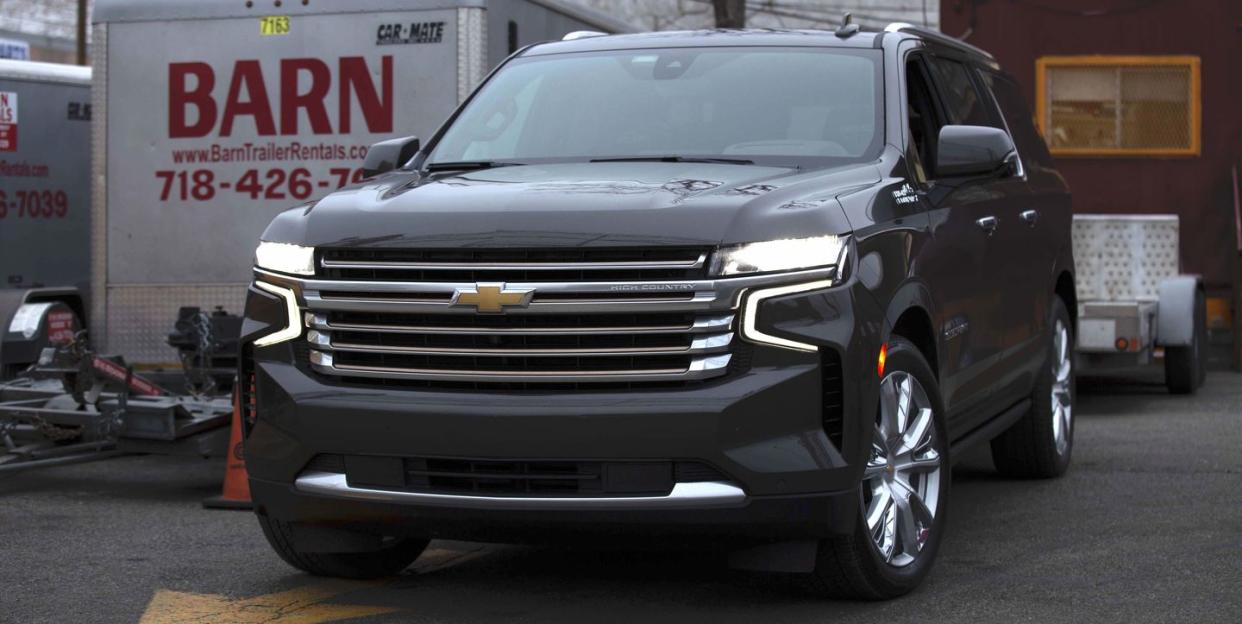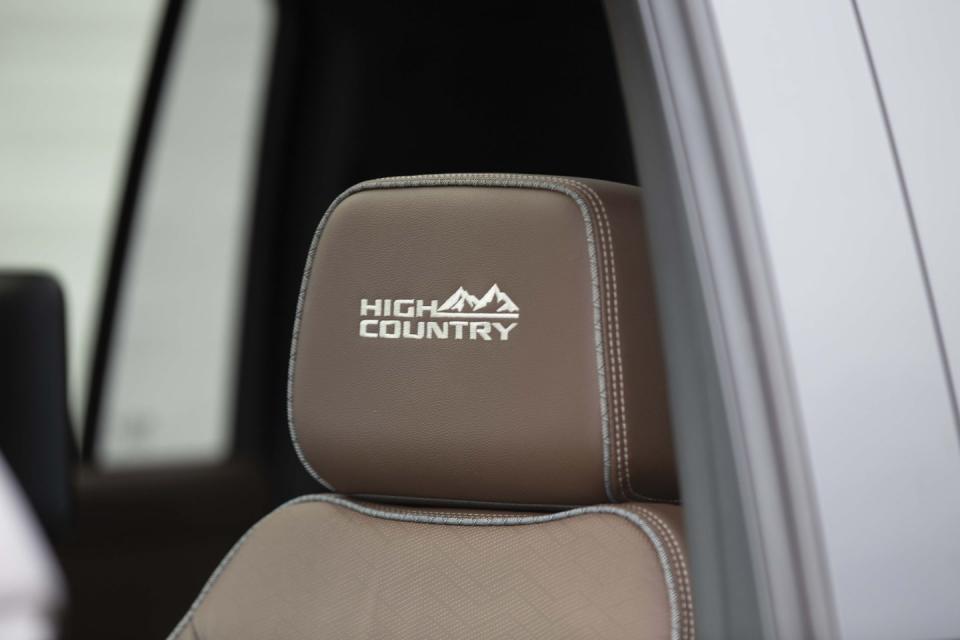You Definitely Want the Diesel in Your New Chevy Suburban

Chevrolet has added a diesel engine option to its revamped full-size Tahoe and Suburban SUVs for 2021. Available on every trim save for the off-road focused Z71, the 3.0-liter Duramax turbo inline six is a $995 option (except in the case of the High Country trim, where it’s actually $1500 cheaper to go diesel) over the base gasoline V-8, a naturally aspirated 5.3-liter. And after spending five days and several thousand miles behind the wheel of a Duramax-powered Suburban, it has become clear that the diesel is a must-have for anyone who plans to use their massive Chevy truck for its intended purpose.
Digital editor Aaron Brown and I needed to be in Missouri in mid-March for the 100 Acre Wood rally, in which we planned to participate using Aaron’s E36 M3 as part of an upcoming story in our magazine. Since we were both in New York City, we needed a tow vehicle that could haul a race car and all of its spares. Having just driven a Tahoe with the base 355-hp 5.3, this was a perfect chance to get our hands on the diesel variant and compare. The differences were shocking.
Don’t get me wrong; I know why they offer a 5.3-liter V-8. It’s for fleet sales, Ubers, and people who can’t fathom paying for anything other than 87-octane gasoline. But in vehicles as big as the Tahoe and Suburban, it’s a bit lethargic. You really have to wind it out to get going, and revving a truck engine never feels satisfying.

The diesel, on the other hand, is perfectly suited to this application. It’s well-tuned for the truck’s weight, working well with the standard 10-speed automatic to ensure the right amount of thrust gets to the wheels. While it’s down on horses versus the V-8, it makes up for it with torque: a mere 383 lb. ft. versus a full 460. It feels like the engine that was meant to be in this truck from the beginning.
And a Duramax under the hood is especially useful if you have a trailer out back. Though Chevy’s official tow capacity ratings for the diesel are only slightly better than the 5.3’s, that low-end torque makes all the difference. Pop it into trailer/haul mode and the truck adjusts throttle sensitivity and gearbox settings, optimizing revs and avoiding any extra strain on the driveline. Even with 5000 extra pounds out back it never felt like the diesel was struggling to pull its weight, whether accelerating onto the highway, scaling steep inclines, or passing lesser traffic. Best of all? This truck returned about 500 miles to a tank.
Weirdly enough, the most surprising part about driving around in a modern diesel-powered Suburban has to be reactions you get. Over a dozen people must’ve stopped us in the paddock or at gas stations to ask if it was really a diesel. They seemed impressed when we told them it was. In their defense, there is something inherently cool and unusual about a seemingly luxurious SUV with a more utilitarian powertrain. I can only imagine how strange it would be to own a diesel-powered Escalade.
And the rest of the Suburban? Aaron and I spent approximately 40 hours behind the wheel during our trip, and I’m happy to report it was an overwhelmingly positive experience. Though it wasn’t perfect.
The biggest change for this generation of Suburban is the addition of fully independent suspension in the rear. Combined with the magnetic ride control and air suspension in our specced-out High Country tester, the IRS evened out pretty much every piece of road we threw at it. Only the biggest bumps shuddered the cabin enough to remind us it was still a body-on-frame vehicle. Not bad, especially considering the massive 22-inch wheels.
Being able to adjust the height of the truck with the air suspension made it super simple to attach and detach the trailer, while a hitch camera (standard equipment on the High Country) meant we could place the hitch ball with supreme accuracy and without fear of bumping into the trailer or scraping the bumper.

What I didn’t like so much were the brakes. At normal speeds they felt just fine, but at 5 mph and under, when you’re slowly coming from a stop, they require more effort than you expect. It’s unpleasant at first, but you get used to it after an hour or two behind the wheel. The problem is amplified when there’s a trailer out back. Granted, our trailer didn’t have the best braking system, but still, there were a few times where Aaron and I had to really squeeze the pedal to get the truck to slow down. It did, of course, but not without rattling our nerves.
The Suburban’s interior is a pleasant place to spend time, but it’s not the truck’s strongest point. All of the buttons are intuitively placed and easy to use, though I would’ve liked it if Chevy hadn’t succumbed to modern trends by switching to a button-style shifter. A traditional column-mounted lever would be more than acceptable, and it would fit the character of the vehicle better. Fit and finish was also questionable in some areas, with gaps in trim pieces and a small bubbling area on the leather-wrapped dash. Also, the wireless charging pad located in front of the cupholder area refused to work 90 percent of the time. Not stuff you want to see when you’re dropping over $80,000 on a vehicle.
Even if you don’t plan to use your Suburban for anything other than grocery store runs or commuting, we wouldn’t recommend getting the base V-8. Sure, it’ll save you a bit of cash up front, but you won’t be having a pleasant time behind the wheel. If you’re on the fence, remember, the Duramax costs less than $1000 to tack on, a rounding error when considering the Suburban’s $51,700 starting price.

The only situation in which I can see someone not optioning the Duramax is if you go for the High Country, the only trim available with the 420 hp 6.2-liter 420-hp V-8. It matches the diesel’s torque rating, and probably sounds better. I haven’t driven one, so I can’t say for sure if it’s better or worse. But if you plan to do any towing, the diesel is likely still the better bet.
You Might Also Like

